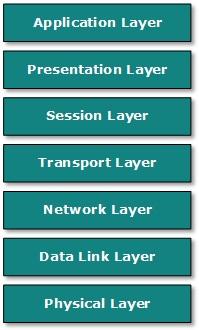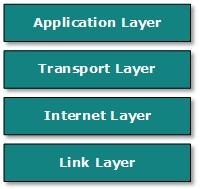Layered tasks
In layered architecture of Network Models, one whole network process is divided into small tasks. Each small task is then assigned to a particular layer which works dedicatedly to process the task only. Every layer does only specific work.
In layered communication system, one layer of a host deals with the task done by or to be done by its peer layer at the same level on the remote host. The task is either initiated by layer at the lowest level or at the top most level. If the task is initiated by top most layer it is then passed on to the layer below it for further processing. The lower layer does the same thing, it processes the task and pass on to lower layer. If the task is initiated by lowest most layer the reverse path is taken.Every layer clubs together all procedures, protocols, methods which it requires to execute its piece of task. All layers identify their counterparts by means of encapsulation header and tail.

OSI Model
Open System Interconnect is an open standard for all communication systems. OSI model is established by International Standard Organization. This model has seven layers:

Application Layer: This layer is responsible for providing interface to the application user. This layer encompasses protocols which directly interacts with the user.
Presentation Layer: This layer defines how data in the native format of remote host should be presented in the native format of host.
Session Layer: This layer maintains sessions between remote hosts. For example, once user/password authentication is done, the remote host maintains this session for a while and does not ask for authentication again in that time span.
Transport Layer: This layer is responsible for end-to-end delivery between hosts.
Network Layer: This layer is responsible for address assignment and uniquely addressing hosts in a network.
Data Link Layer: This layer is responsible for reading and writing data from and onto the line. Link errors are detected at this layer.
Physical Layer: This layer defines the hardware, cabling and wiring, power output, pulse rate etc.
Internet Model
Internet uses TCP/IP protocol suite, also known as Internet suite. This defines Internet Model which contains four layered architecture. OSI Model is general communication model but Internet Model is what Internet uses for all its communication. Internet is independent of its underlying network architecture so is its Model. This model has the following layers:

Application Layer: This layer defines the protocol which enables user to internet with the network such as FTP, HTTP etc.
Transport Layer: This layer defines how data should flow between hosts. Major protocol at this layer is Transmission Control Protocol. This layer ensures data delivered between hosts is in-order and is responsible for end to end delivery.
Internet Layer: IP works on this layer. This layer facilitates host addressing and recognition. This layer defines routing.
Link Layer: This layer provides mechanism of sending and receiving actual data. But unlike its OSI Model’s counterpart, this layer is independent of underlying network architecture and hardware.
